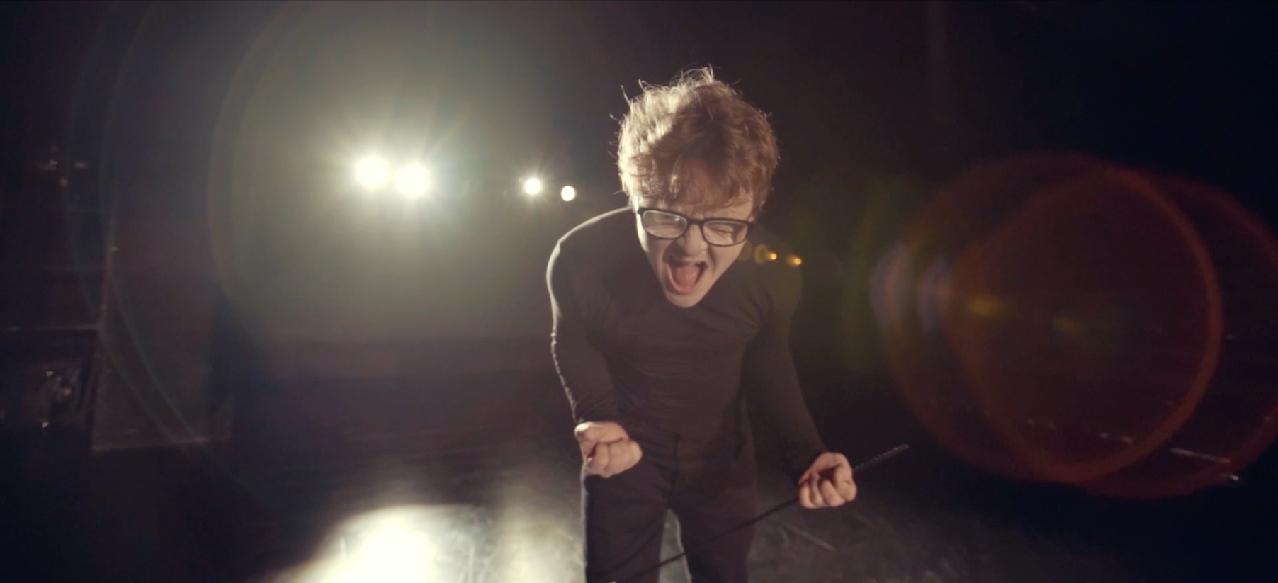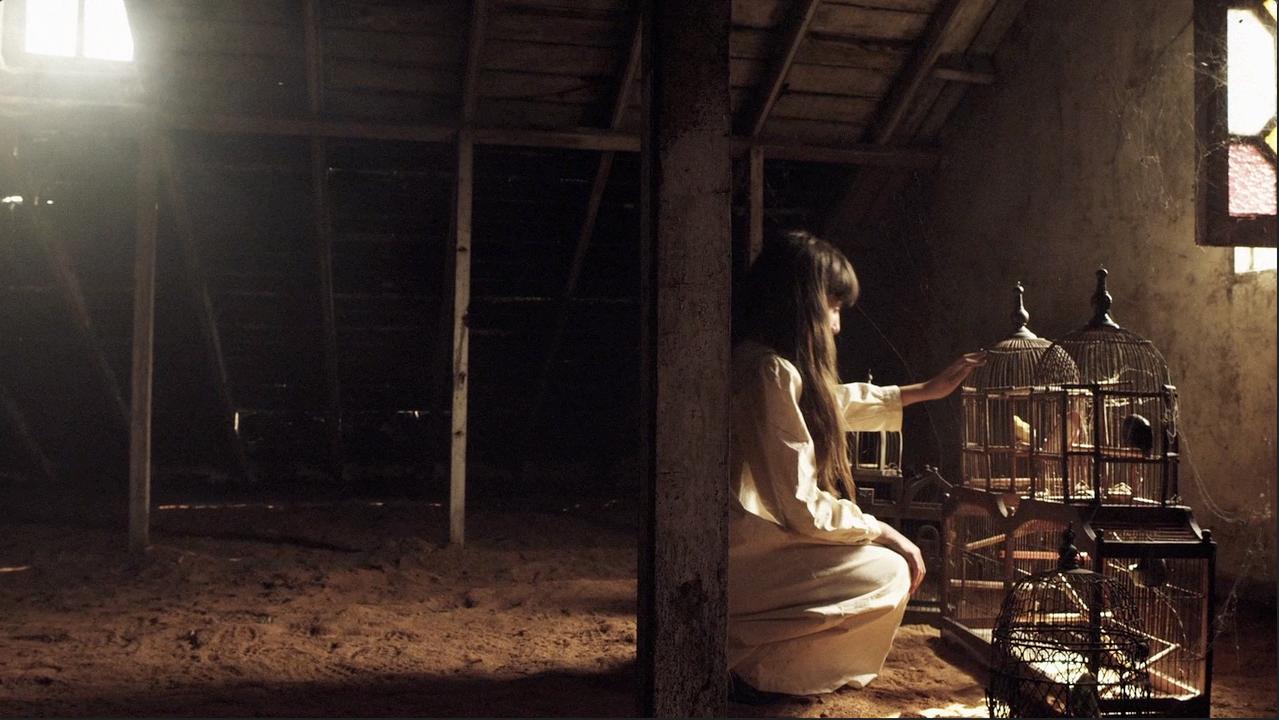Visual artist

Portfolio
Interactive installations - Video InstallationsSingle Channel videos - other collaborations
luchosoldevilla@gmail.com
www.luchosoldevilla.com
Luis Soldevilla





This interactive installation places us inside a very rustic and primitive tee pee with a campfire inside. Around the campfire there are 4 oversized cell phones that look at the fire as totems in a ceremony.
In their screens images of other campfires in various landscapes are displayed. These campfires change randomly and independently within each cellphone until a spectator seats on any bench.






When a spectator sits on any bench the images of campfires disappear and instead the viewers see themselves projected inside the cell phones. But the cell phones do not display in selfie mode, instead they project on the cell phone in front, which, like a mirror in front of another mirror, replicates the image of the viewer and the cell phone, but inside another cell phone.

As the spectators get up from the benches, the totems once again project the images of campfires.Both moments are reinforced with sound within the installation.

This piece aims to take us to the primitive origin, to the beginnings of civilization in which we supposedly lived in greater connection with nature and in community, but at the same time contrasting it with the world through the screens that we now live and embrace.





Interactive VIDEO INSTALLATION

CONCEPT
The idea of a door comes from the assumption of dividing a reality in two. It comes with an innate idea of mankind of keeping these spaces apart from each other. The installation wants to play with these limits, with transition, with the ability of the door to transport us to different environments and states.
The idea is to place the installation in a spot where its location invites people “to use” the installation to be able to circulate, in order that the fact of entering and going out of the installation be of mandatory traffic to cross from side to other, reinforcing the proposed concepts.

In door / Out door
Interactive VIDEO INSTALLATION
INTERACTIVITY - stage A
The interactivity in the installation is generated between the projected video and the action of the spectator when crossing the threshold of door. Every time a person passes trough the doorsill, the projected doors will turn into another door of a facade.

In door / Out door
Interactive VIDEO INSTALLATION
INTERACTIVITY - stage B
If after a certain lapse of time nobody enters or goes out of the installation the projected video transforms in a wide view of the shore with a threshold and a semi open door, inviting the spectator to pass it by.






MANCHINERY

MULTICHANNEL VIDEO INSTALLATION




Brief description and way of mounting
Multi-channel video projection (4:1) Multi-channel audio. Digital video. Digital projections. Variable dimensions. 2012.
The machinery installation places the viewer in front of 4 screen that become a visual orchestration of machines, people, gears, interfaces and devices, working together for a superior organism. A multichannel choreography of diverse elements and situations cross-linked by the dynamics of motion, transformation, change and the relationships of cause and effect. A panoramic window into the insides of this machinery, an up-to-date City Symphony film rendered through the intricate beauty of an assembly line.

* The dimensions of this installation are variable. The dimension showed in this graphic are ideal and referential (as close to the dimensions in the grahic, the better). The purpose of the big format is to increase the immersive experience adding a sculptural dimension to the video. The panoramic landscape lends itself for the idea of a production line. The movements in the video, transform into a sensation of motion within the space.

Theoretical background and references
A series of devices connected by a relationship of cause and effect lends itself to be easily associated with a Goldberg Machine. Instead, the machine in this piece is the assembly of other machines, people and interfaces; whose connections are more based on matters of content, rhythm and motion than cause and effect.
Rendering daily scenes of urban life and machines as a series of interconnected elements has been also explored in the City Symphony Films. Following this line, this piece is divided into sections or movements that vary in pace and intensity according to the era in the relationship men-machine that they depict.
The segmentation by periods of production within the history of capitalism (Henry Ford era/ post- Fordism/ industrialism/Postindustrialism] have been done following Deleuze´s analysis on technology and society; and how the relationship men-machines (accordingly to each era respectively) have developed different methods of control and production.
In the sections associated to the industrial revolution era, in which cogs, gears and pistons were visible and their functioning was more exposed as evident; the link among elements (screens) is more mechanical. While in the movements that approach methods of production closer to the Information Technologies, in which processors, computers and codes are its key elements, and its way of functioning is less visible. The connection between elements is more digitally triggered. Everything is independent and interconnected at the same time.

In terms of form this project is closely related to what is know as Expanded Cinema, in the sense that it explores the spatial aspect of the moving image. The multi-channel audio and the multi-channel projections, re-inforces its sculptural qualities, allowing this visual score of people, machines and devices behave and work together as a whole or a superior organism.
* For a project report and deeper information on the theoretical and artistic research, in the following link you will find the thesis submitted for my master in Media Design at the Piet Zwart institute in Rotterdam http://issuu.com/luchosoldevilla/docs/manchinery_research_thesis_
“ Types of machines are easily matched with each type of society--not that machines are determining, but because they express those social forms capable of generating them and using them. The old societies of sovereignty made use of simple machines, levers, pulleys, clocks; but the recent disciplinary societies equipped themselves with machines involving energy, with the passive danger of entropy and the active danger of sabotage; the societies of control operate with machines of a third type, computers ” Gilles Deleuze - Postscript on the societies of control (1992)
Video
To see a video of the projected image go to : https://vimeo.com/45149582
Password : Soldevilla
Credits
video and audio : Luis Soldevilla
Audio mixing : Omar Pareja
General Production : Luis Soldevilla
Production Lima : Emergencia Audiovisual
Location manager / Producer : Carolina Denegri
sonido directo : Willy Ilizarbe
Other audios, samples and wilds : The Free Sound Project
Conceptual and production support : Piet Zwart Institute
Shot mostly in Peru. Some footage shot in the Netherlands

Registry from :

















 MULTICHANNEL VIDEO INSTALLATION
MULTICHANNEL VIDEO INSTALLATION






























































